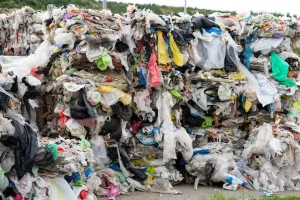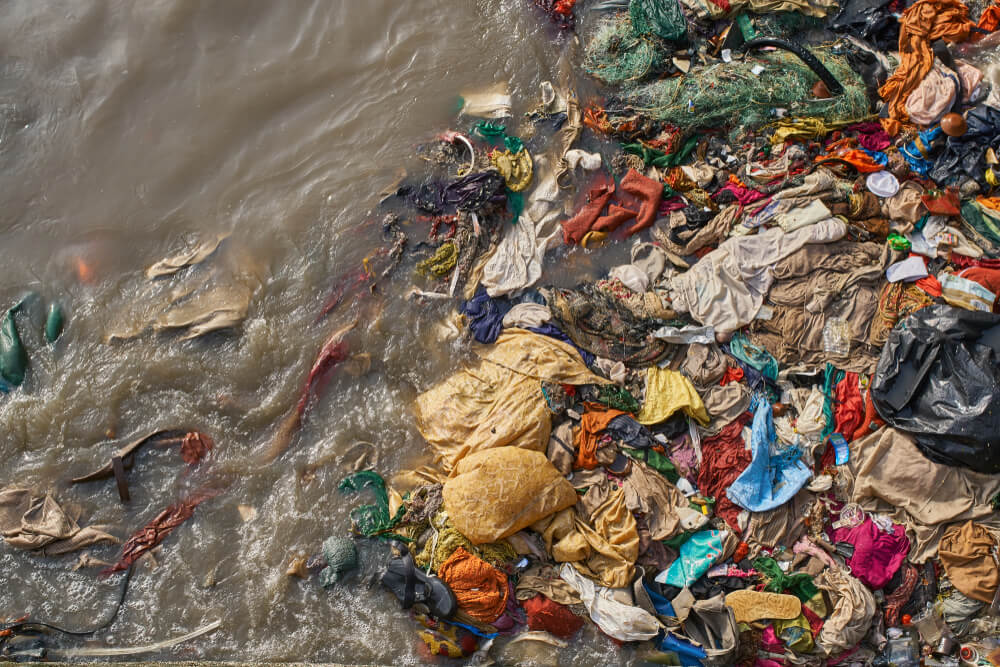
The Devastating environmental Impact of Fast Fashion are an urgent and important problem that needs our immediate response. The appeal of stylish, affordable apparel frequently draws us in as customers, yet this ease comes at a high cost to the environment. The fast fashion sector damages ecosystems and exacerbates climate change by contributing to waste, pollution, and resource depletion. The significant environmental impacts of fast fashion will be discussed in this blog article, along with the reasons why it is imperative that customers choose more environmentally friendly options.
What is Fast Fashion?

Fast fashion is the process of turning trend setting fashion quickly and cheaply into consumer products. Clothing is manufactured by retailers fast and in bulk to help them have the new fashion seasons as often as they can. This model makes consumers purchase more clothes which are usually worn severally a few times and then discarded.
Devastating Environmental Consequences Of Fast Fashion

The Devastating environmental Impact of Fast Fashion is profound and multifaceted:
- Resource Depletion: Fast fashion production line consumes large natural resources. For example, cotton heating and production use vast amounts of water and pesticides, leading to erosion of soil and water deficits in many countries and also a lot of the pieces worn by models on the runway end up in landfills .
- Pollution: Dyeing and finishing steps employed in the production of fast fashion are a primary contributor to water pollution. Some manufacturing processes in textile industries release dangerous chemicals which pollute water sources by flowing directly into the rivers and seas affecting the lives of aquatic animals and pollutes our drinking water.
- Waste Generation: It should be noted that fast fashion is one of the major sources of textile waste production all over the world. Current statistics shows that over 92 million tons of textile waste are generated annually and the majority dumped in the nearest dumps and landfills. Unfortunately, man-made fabrics such as polyester might require hundreds of years to degrade and hence worsen the world’s waste problem.
Social Impact Of Fast Fashion 0n The Environment
Beyond environmental degradation, fast fashion also has severe social implications:
- Labor Exploitation: Some fast fashion brands source their materials and manufacture products from developing countries where workers are exploited through poor working conditions, many hours to work and little pay. This exploitation gives rise to questions on the cost of cheap apparels that are flooding the market today.
- Consumer Culture: Fast fashion framework implies constant consumption, which leads to buying more because the quality is not very important. It becomes evident that this thinking not only damages the
- Environment but also reduces the value of quality manufacturing and everyone’s incentives to make long-lasting, dependable consumer goods using eco-friendly materials.
A Call for Change On The Environmental Effect of Fast Fashion

As consumers become more aware of the detrimental effects of fast fashion, there is a growing movement towards sustainable alternatives:
- Mindful Consumption: Consumers can combat the the Devastating environmental Impact of Fast Fashion trajectory by adopting mindful shopping habits. This includes purchasing fewer items, investing in high-quality pieces, and supporting brands that prioritize sustainability.
- Second-Hand Shopping: Thrift stores and online resale platforms offer an eco-friendly alternative to buying new clothes. By choosing second-hand items, consumers can reduce demand for new production while finding unique pieces.
- Advocacy for Change: Supporting policies that promote sustainable practices within the fashion industry can help drive systemic change. Consumers can advocate for transparency in supply chains and support legislation aimed at reducing waste and pollution.
The Devastating Impact of Fast Fashion on the Environment:
A Call for Sustainable Change
The devastating environmental impact of fast fashion, are especially important as a shocking wakeup call to consumers around the globe. Learned consumers thus have a responsibility of ensuring that they do the right thing and make the right purchasing decisions that will enable a change of this nature to be achieved. Being cautious with the things that you buy can also be helpful to the environment as well as also helping a worthy cause to come to be a reality in this world. In future dynamics, consumers need to be aware of their positions as activists with a mouth that can shift industry beliefs and practices.
Whenever we choose sustainably, we are not only reducing the horrible effects that fast fashion has on our world, but also making it better for everyone.
FREQUENTLY ASKED QUESTIONS
1. What is fast fashion, and why is it a problem?
Fast fashion refers to the rapid production of inexpensive clothing that mimics current trends. The Devastating environmental Impact of Fast Fashion is problematic because it leads to overconsumption, significant waste, and environmental degradation due to resource depletion and pollution from manufacturing processes.
2. How does fast fashion contribute to devastating environmental impact?
The fast fashion industry contributes to environmental pollution through toxic chemical runoff from dyeing processes, excessive water usage, and the release of microplastics from synthetic fabrics, which contaminate waterways and harm aquatic ecosystems.
3. What are the social implications of environmental effect of fast fashion?
Fast fashion often relies on exploitative labor practices in developing countries, where workers endure poor working conditions and low wages. This raises ethical concerns about the true cost of cheap clothing.
4. How can consumers make more sustainable choices in their clothing purchases?
Consumers can make sustainable choices by buying fewer, higher-quality items, opting for second-hand clothing, supporting ethical brands, and advocating for transparency in supply chains.
5. What impact does fast fashion have on textile waste on the environment?
Fast fashion significantly contributes to textile waste, with millions of tons of clothing ending up in landfills each year. Many garments are discarded after only a few wears due to the low quality and disposable nature of fast fashion items.


